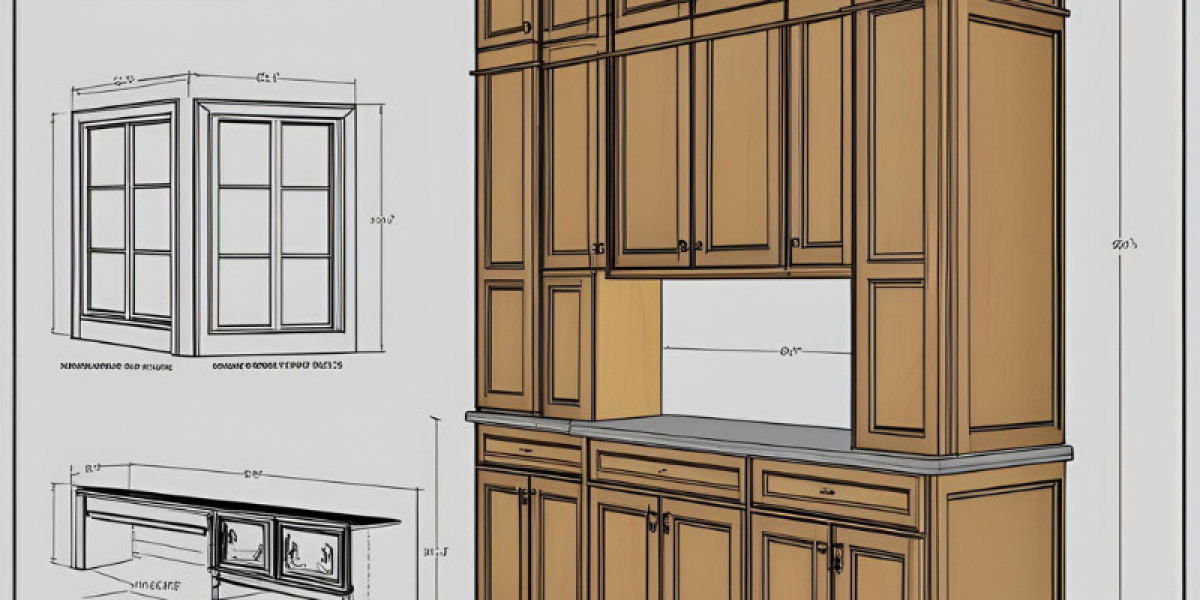When creating millwork shop drawings, it’s crucial to ensure that all the necessary details are clearly presented to guide the construction and installation process. These drawings serve as the bridge between the design phase and the final product, providing builders with the information they need to accurately create custom woodwork, cabinetry, and other millwork features.
To ensure the success of a project, shop drawings must include several key elements that cover technical specifications, design intent, and installation requirements.
Key elements every millwork shop drawing should include accurate measurements, material specifications, and detailed elevations. Additionally, notes about finishes, hardware, joinery techniques, and any special features or customizations are essential. It’s also important to show accurate views from multiple angles, as well as exploded views or details for complex parts of the assembly.
By providing these elements in the shop drawing, fabricators and installers will have a clear understanding of the project’s scope, ensuring that the final product matches the intended design and meets the required standards.
General Information & Drawing Identification
General information and drawing identification are essential components of millwork shop drawings. They provide clarity and help everyone involved in the project understand the details of the work. This section includes important details about the project, the company, and how to reference the drawing.
The general information typically includes the project name, location, and the name of the architect or designer who created the design. It also includes contact information for the millwork shop, such as the company name, address, and phone number. This ensures that anyone reviewing the drawing can easily reach out if they have questions or need clarifications.
Drawing identification refers to the specific code or number given to each drawing. This code helps to organize and track drawings easily, especially in large projects where multiple drawings may be used. Each drawing might include a unique number and title, which describes the type of millwork shown (like cabinets, doors, or trim). A revision number or date might also be included to show if there have been any changes to the drawing.
Including this general information and drawing identification ensures that everyone working on the project has access to the correct and most up-to-date drawings. It reduces confusion, helps avoid mistakes, and streamlines communication among the design team, fabricators, and installers.
Dimensions and Measurements
Dimensions and measurements are one of the most important parts of millwork shop drawings. They provide the exact sizes and locations of all the elements that need to be built and installed. Without clear dimensions, it would be very difficult to create custom woodwork or cabinetry accurately.
In millwork drawings, dimensions show the width, height, depth, and spacing of each piece. For example, a cabinet might need to be 36 inches tall, 24 inches wide, and 12 inches deep. These measurements must be precise because even small errors can cause problems when assembling or installing the pieces.
To make sure the measurements are easy to understand, they should be clearly labeled and easy to read. It’s common to use arrows or lines to point to the part of the drawing being measured, and the exact numbers should be written next to them. For example, the distance between two cabinet doors or the height of a shelf should be labeled with accurate measurements.
It’s also important to include measurements for any special features, such as the thickness of materials or the size of gaps for hardware. These details ensure that everything fits together perfectly during construction and installation.
Proper dimensions and measurements reduce the chance of mistakes and help the fabricators and installers know exactly what to build. They are crucial for ensuring the final product matches the designer’s intentions and fits properly in the space.
Joinery and Construction Details
Joinery and construction details refer to the specific elements and techniques used in building structures, especially the wooden components, and how they fit together. Joinery is the craft of connecting wood pieces using different methods to create a strong, durable bond. Common joinery techniques include dovetail joints, mortise and tenon joints, and tongue-and-groove joints. These methods ensure that wooden parts fit perfectly, providing both strength and visual appeal.
In construction, details go beyond just the materials used. They include precise measurements, the positioning of structural elements like beams, and how everything is connected for stability. For example, the way windows and doors are framed, or how floorboards are laid, are all important construction details that affect the building’s durability and appearance.
Joinery and construction details are essential in both residential and commercial buildings. In homes, they can be seen in wooden doors, window frames, cabinets, and flooring. These elements add aesthetic value and can also impact the energy efficiency and safety of a building. For larger projects, like offices or factories, construction details ensure that the structure can withstand wear and tear, heavy loads, or extreme weather conditions.
Ultimately, joinery and construction details are key to ensuring that buildings are not only functional and stable but also visually appealing and long-lasting. The attention to detail in how parts are joined together plays a crucial role in the overall quality of the final construction.
Material Cuts and Fabrication Details
Joinery and construction details refer to the specific elements and techniques used in building structures, especially the wooden components, and how they fit together. Joinery is the craft of connecting wood pieces using different methods to create a strong, durable bond. Common joinery techniques include dovetail joints, mortise and tenon joints, and tongue-and-groove joints. These methods ensure that wooden parts fit perfectly, providing both strength and visual appeal.
In construction, details go beyond just the materials used. They include precise measurements, the positioning of structural elements like beams, and how everything is connected for stability. For example, the way windows and doors are framed, or how floorboards are laid, are all important construction details that affect the building’s durability and appearance.
Joinery and construction details are essential in both residential and commercial buildings. In homes, they can be seen in wooden doors, window frames, cabinets, and flooring. These elements add aesthetic value and can also impact the energy efficiency and safety of a building. For larger projects, like offices or factories, construction details ensure that the structure can withstand wear and tear, heavy loads, or extreme weather conditions.
Ultimately, joinery and construction details are key to ensuring that buildings are not only functional and stable but also visually appealing and long-lasting. The attention to detail in how parts are joined together plays a crucial role in the overall quality of the final construction.
The End Note
In conclusion, millwork shop drawings are a vital component of the construction process, serving as a clear and detailed guide for fabricators and installers. By including accurate dimensions, material specifications, joinery techniques, and construction details, these drawings ensure that the final product aligns with the designer’s vision and meets the necessary standards.
Key elements such as general information, drawing identification, and comprehensive fabrication instructions reduce the likelihood of errors and miscommunications throughout the project. The precision of measurements and the clarity of construction details not only facilitate smooth production and installation but also enhance the durability, functionality, and aesthetic appeal of the finished millwork.
Ultimately, well-prepared shop drawings are essential for delivering high-quality, custom-built woodwork that fits seamlessly into the intended space and serves its purpose effectively.








